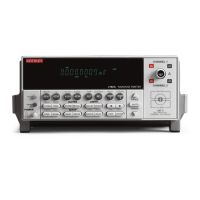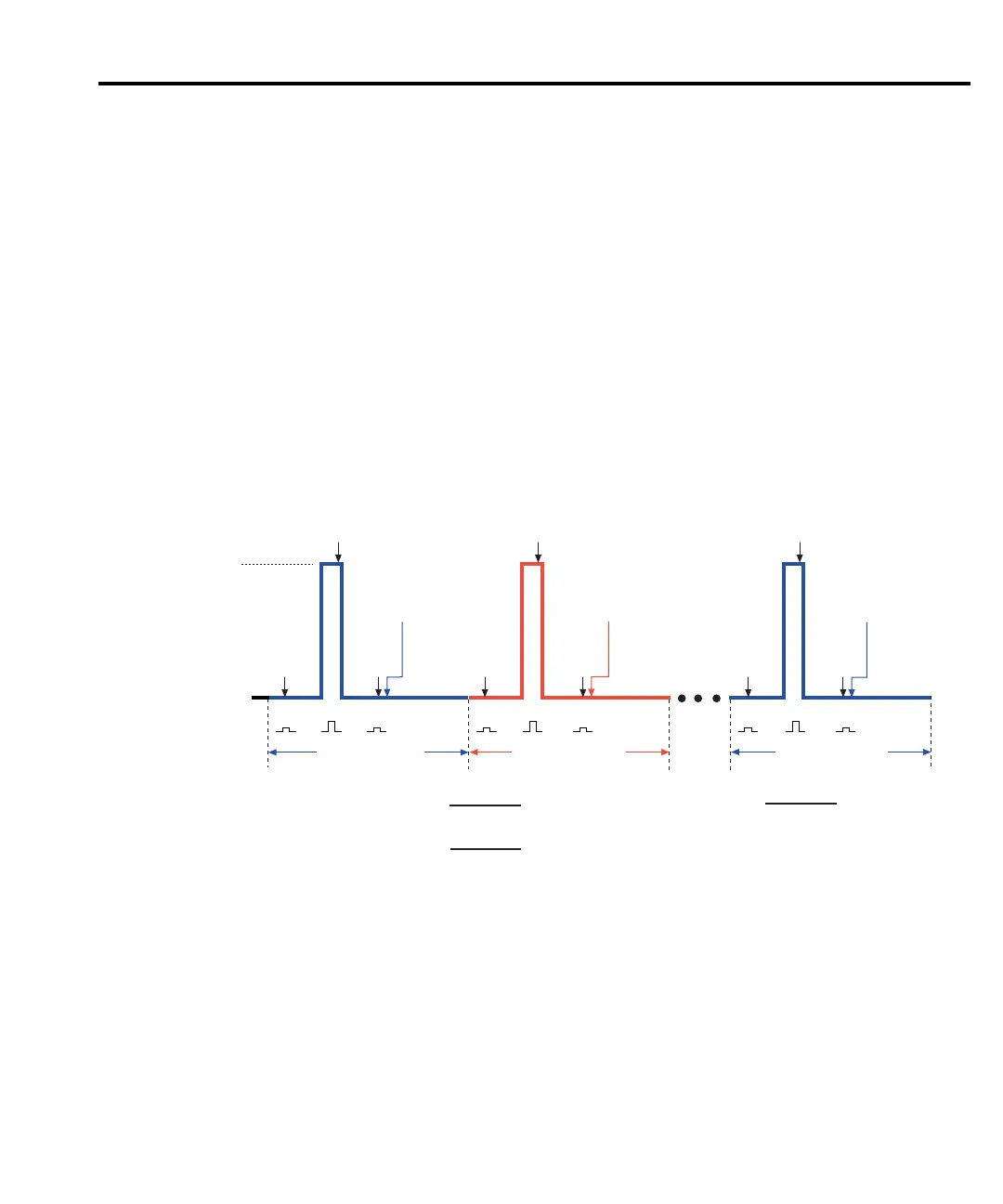Delta, Pulse Delta, and Differential Conductance
I-9
Pulse Delta process
Pulse Delta measurements
For Pulse Delta, the Model 6221 outputs current pulses. Current pulses that ha
ve a short
pulse width are ideal to test a low-power DUT that is heat sensitive.
By default, Pulse Delta uses a 3-point repeating-average algorithm to calculate readings.
Each Pulse Delta reading is calculated using A/D measurements for a low pulse, a high
pulse, and another low pulse. The Model 6221 outputs the pulses and the Model 2182A
performs the A/D measurements. As shown in Figure I-4, every three pulses yields a single
Pulse Delta voltage reading.
Figure I-4
Pulse Delta 3-point measurement technique
In cases where the high pulse will cause heating of the DUT
, the measurement at the sec-
ond low pulse could be adversely affected by the heat caused by the high pulse. In that
case, the measurement at the second low pulse can be disabled. This does not change the
overall timing of the pulse output. Eliminating the second low pulse measurement changes
the basic calculation to the following:
Pulse Delta = (2Y – 2X) / 2
Where: Y is the measurement at the high pulse.
X is the measurement at the first low pulse.
Pulse Delta
Reading
1st
62xx
I-Source
2182A
A/D
C
I-High
I-Low
2B - A - C
(
1st Pulse Delta Reading =
2
)
2E - D - F
(
2nd Pulse Delta Reading =
2
)
2Y - X - Z
(
Nth Pulse Delta Reading =
2
)
2182A
A/D
A
2182A
A/D
B
2182A
A/D
E
2182A
A/D
F
2182A
A/D
X
2182A
A/D
Y
2182A
A/D
Z
1st Pulse Delta
Interval
2nd Pulse Delta
Interval
Nth Pulse Delta
Interval
Pulse Delta
Reading
Nth
2182A
A/D
D
Pulse Delta
Reading
2nd
Where:
X, Y, and Z are the A/Ds for the first low, high, and
second low pulses for the Pulse Delta cycle.
High
LowLow High LowLow High LowLow

